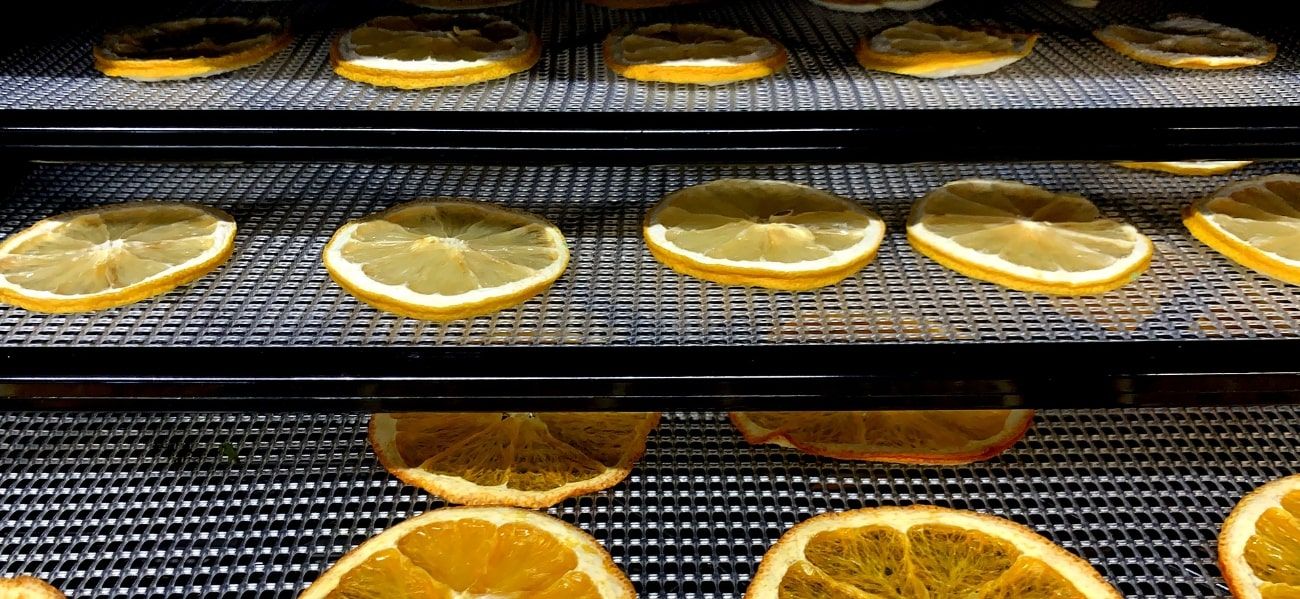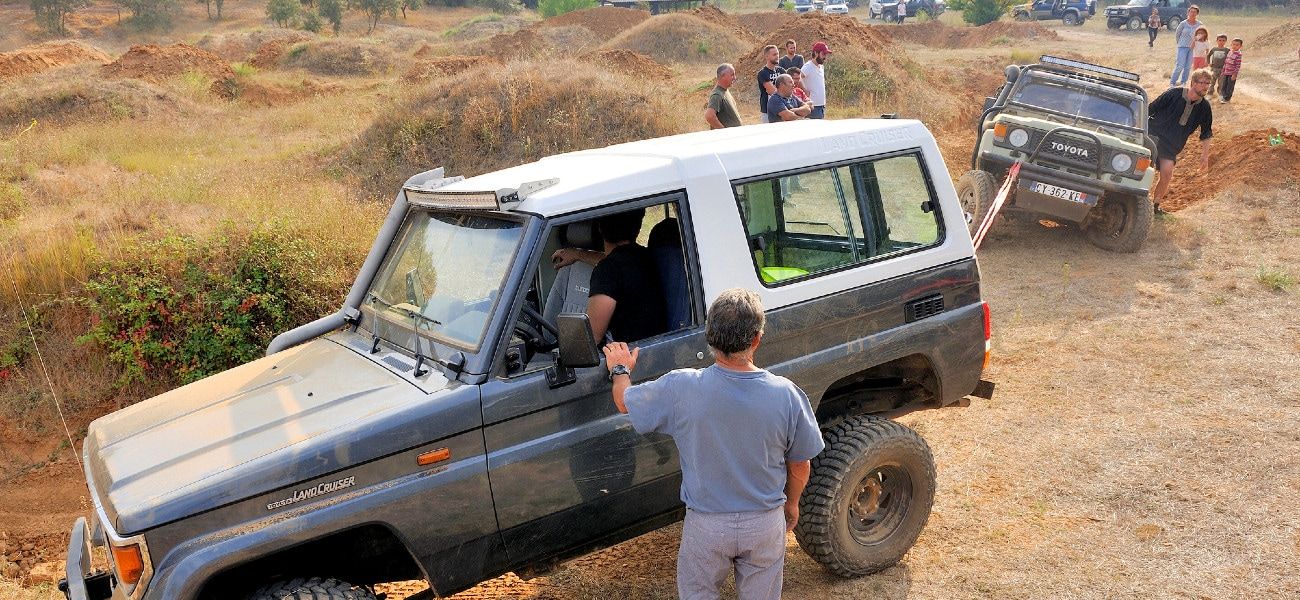Are you looking for a way to cut down your pack’s weight? What about that craving for something new and different while on the trail?
Freeze drying and dehydrating foods will give them a completely different texture and experience while being the same snacks that you know and love!
The Basics of Freeze Drying and Dehydrating
You may have seen boxes, bags, and tins of freeze dried and dehydrated food while shopping for groceries, but have you ever stopped and thought about what they really are?
When hiking and bushwalking, you need snacks and food that can give you both the nutrition and the energy that you need to keep going on the trail. Running out of energy is simply not an option!
Let’s go over the main aspects of each food preservation method to determine what makes them different.
What is Freeze Dried Food?
Well, the name says it all really! This food preservation method uses intense cold temperatures to remove 98% of a particular food’s water content.
The science behind freeze dried food is actually quite interesting! The food is frozen to a chilly -45°C while a vacuum removes the moisture by bringing it straight from its solid form to a gas. This process is known as sublimation.
Thanks to sublimation, freeze dried food gets its unique crunchy texture!
Freeze dried food is very convenient for people on the go, especially us hikers! It retains most of the original nutritional value including antioxidants and vitamins, so you won’t miss out on these while on the trail.
The fun part is, if you aren’t craving that freeze dried crunch, a little bit of water can rehydrate it and it will taste as well as look nearly identical to its original form!
Freeze dried food is something that you may be using more of than you think! If you drink a nice cup of instant coffee each morning, you are already enjoying freeze dried products!
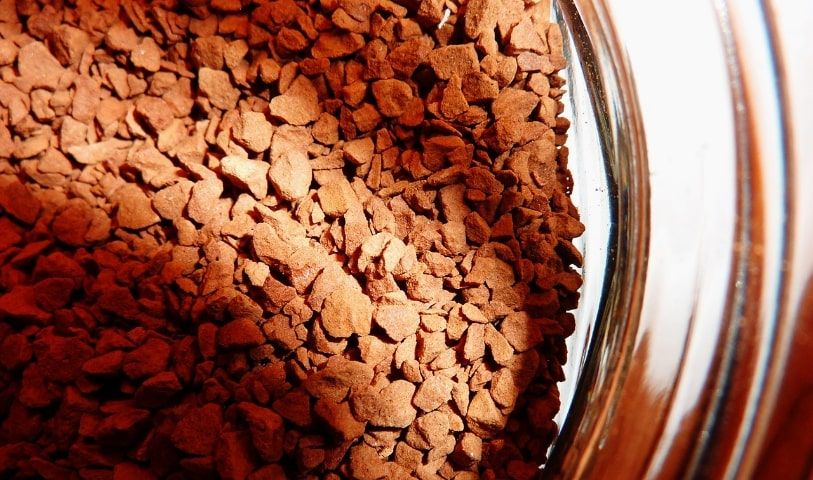
What is Dehydrated Food?
What does jerky, banana chips, and fruit leathers all have in common? They are all dehydrated foods! But what is dehydrated food exactly?
The dehydrating process uses high temperatures to remove 90-95% of the food’s water content resulting in a compact snack! The texture of dehydrated foods are typically more chewy and tough than a freeze dried snack.
By placing the food in temperatures of 60°C for a number of hours, dehydration will occur. These temperatures allow the moisture found in the food item to evaporate and leave behind a smaller and chewier version.
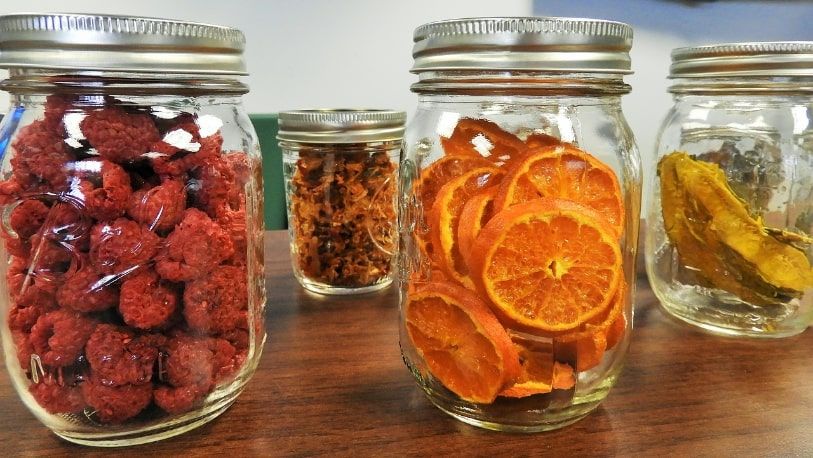
Dehydrated food in jars
A consequence of using heat to remove moisture, is the unfortunate breaking of the hydrogen bonds found in many vitamins. This destroys the vitamins and reduces the overall nutritional value of the food. For this reason, it is important that you find a substitute for these lost vitamins in other, non-dehydrated trail snacks.
When enjoying these dehydrated foods, you may notice a sweeter taste, especially in dehydrated fruits! This is from the sugars becoming more concentrated as the item shrinks in size.
Another “sweet” aspect you’ll notice is the more room you have for snacks! The compact size of the food will allow for more items in the same amount of space.
Reminder
If you are calorie counting by weighing out your food, this may be trickier with dehydrated food as a measured 100g of fresh strawberries will have far less calories than 100g of dehydrated strawberries.
Freeze Dried vs. Dehydrated Food
Both of these options of preparing foods can be useful for taking on a hike, however, is one better than the other? Only you can make that decision.
The only true way to find out which way works best for you or what you prefer is by trial and error. Here are some things to consider:
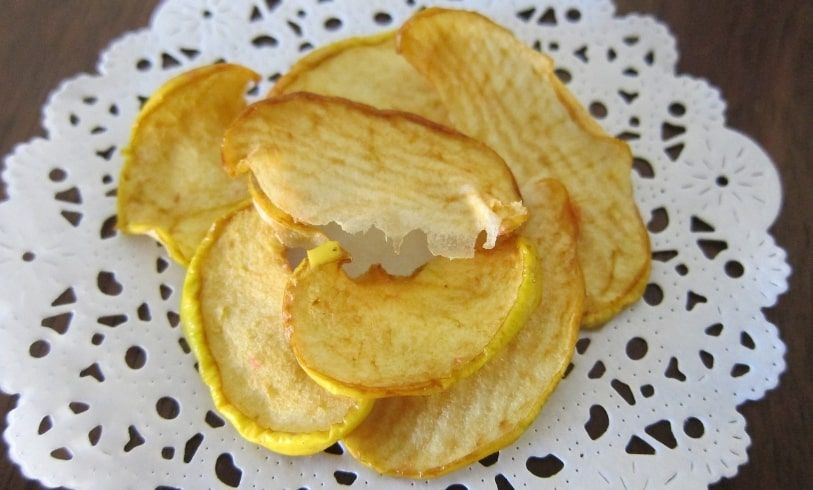
Dehydrated apple
What are the Pros / Cons of Eating These Foods?
Let's take a look at the mains pros and cons associated with eating freeze dried or dehydrated food.
How to Freeze Dry Food?
If you’re looking to freeze dry food for your hiking adventures, there are a variety of techniques to choose from! All of these methods can be done from the comfort of your home and without a commercial sized freeze dryer.
METHOD 1: Home Freezer
If you have a standard home freezer, you can freeze dry your food! This method is quite easy, but it involves time and patience. First, you will put small pieces of food on a tray and place it in the freezer.
After 2-3 weeks, you will take the tray out and you’ll have your freeze dried snacks!
To test if your food is ready, take a piece out of the freezer. If it turns black after a while, the drying is not complete and you’ll need to wait some more.
METHOD 2: Dry Ice
Using dry ice is a quicker option than putting it in a freezer. The first thing you’ll need to do is put the food in a container at least twice the size of the items that you are freezing.
This allows for the object to expand as it will do so rapidly. You will then place dry ice in the cooler and lay your container with food inside on top. After 24 hours, your snacks will be ready!
METHOD 3: Freeze Drying Machine
If you prefer to use a machine to freeze dry your food, that’s no problem! This method is however a lot more expensive than the others, but if you’re planning on freeze-drying large amounts often, this may be the technique for you.
A machine like this will cost you around $2,500 - $5,000. Each machine comes with its own set of instructions that vary based on the food you are drying. This method typically takes around 8-10 hours.
How to Freeze Dry Strawberries
This method utilizes dry ice to freeze dry strawberries!
- Clean your strawberries well, remove the stems, and cut thinly
- Place the slices in a ziplock bag and remove the air
- Place dry ice in a cooler and set the bag on top of the dry ice
- Allow for some of the gasses to escape and then shut the cooler
- Let the bag sit in the cooler for 24 hours
- Enjoy!
How to Dehydrate Food?
If you’re looking to dehydrate food for hiking, there are plenty of traditional as well as modern techniques that you can make use of.
In order to successfully dehydrate food, you need three things: a temperature of at least 30°C, humidity less than 60%, and good air circulation.
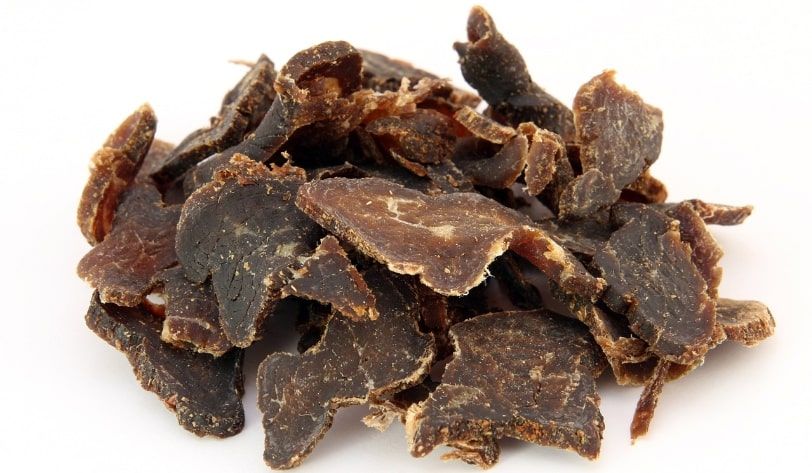
Dehydrated beef
METHOD 1: Sun Drying
Sun drying is a method that has been around since ancient times and is actually quite simple! All that is involved is taking your washed and cut food, placing it on a rack, and then setting it in the sun.
The sun removes the moisture for food, leaving behind a dehydrated snack.
METHOD 2: Air Drying
Air drying is a perfect technique for herbs, spices, and peppers! This method involves stringing up the item and hanging it in a closed area while the circulating air dries out the food.
METHOD 3: Electric Dehydrator
When using an electric dehydrator, the instructions are quite simple. First, prepare the food by cutting the food into similar size, small pieces and cleaning them well.
Make sure the food on the trays are well spaced and follow that specific dehydrator’s instructions on how long a food will need to be kept in the dehydrator.
METHOD 4: Oven Drying
The last method we have to discuss is oven drying! Oven drying is the easiest, most convenient, and quickest of the methods.
You will need to prepare the food by cutting it into 6mm thick pieces. Once prepared, you will need to arrange the slices on a lined tray and then place it in the oven on the lowest setting for 6-8 hours.
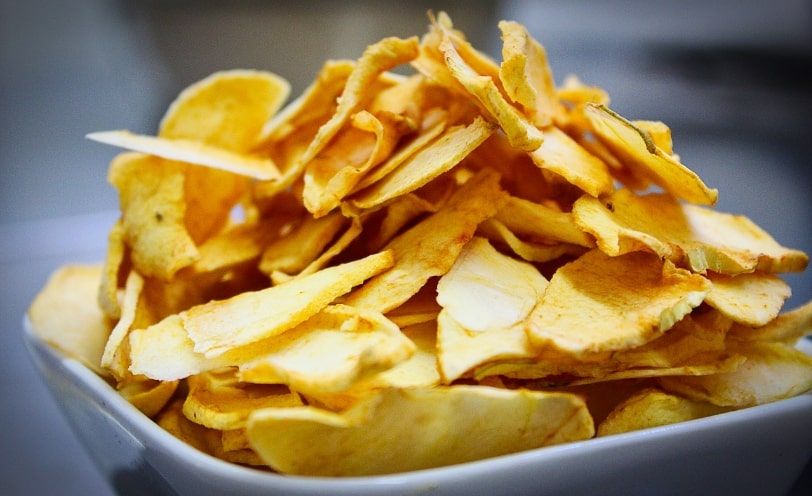
Apple chips
How to Dehydrate Bananas
This method utilizes the oven drying technique!
Finishing Up
Freeze drying and dehydrating foods allows you to bring along a variety of different foods when you go hiking. With these methods, you can turn otherwise messy or complicated foods into something quick and easy.
You’ll also be decreasing the weight of your pack, which is very important, especially on longer hikes.
Which method are you excited to try out? Let us know below, along with any questions you may have!
This article may contain affiliate links. I will earn a commission if you choose to purchase a product or service after clicking on my link. This helps pay for the cost of running the website. You will not be disadvantaged in any way by using my links.
Note that while every effort is made to ensure the accuracy of the information on this page, there may sometimes be errors. Check all specifications with the manufacturer before purchasing any product.

